Spatial
Andrew Barrie Lab 14 Michael Davis Kathy Waghorn Paola Boarin Learning from Trees
-
Pou Auaha / Creative Director
Kathy Waghorn
-
Ringatoi Matua / Design Directors
Andrew Barrie, Michael Davis
-
Ngā Kaimahi / Team Member
Paola Boarin -
Kaitautoko / Contributors
Max Smitheram, Denice Belsten, Melanie Milicich, Robyn Chin, Ruamoko Solutions, Mark Andresen, Dylan Waddell, Josh Crandall, William Challombe-King, Bronte Perry -
Client
Italian Pavilion at La Biennale
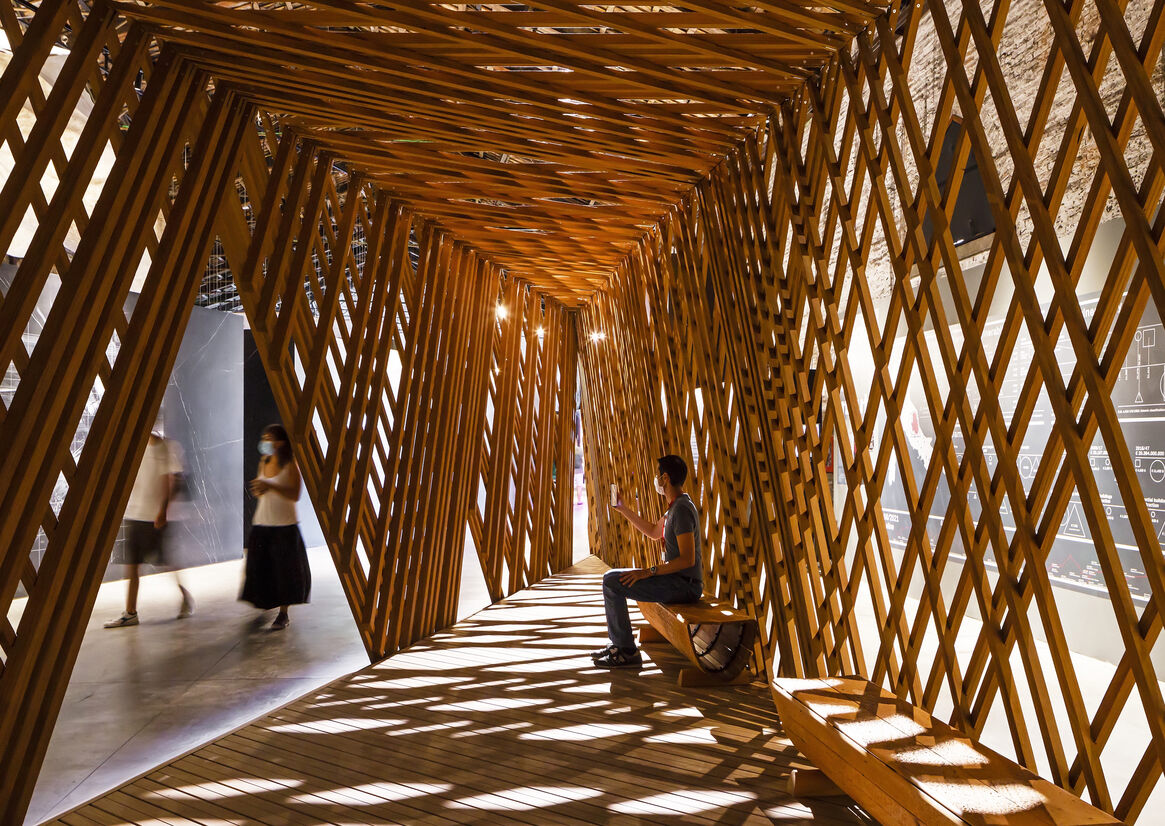
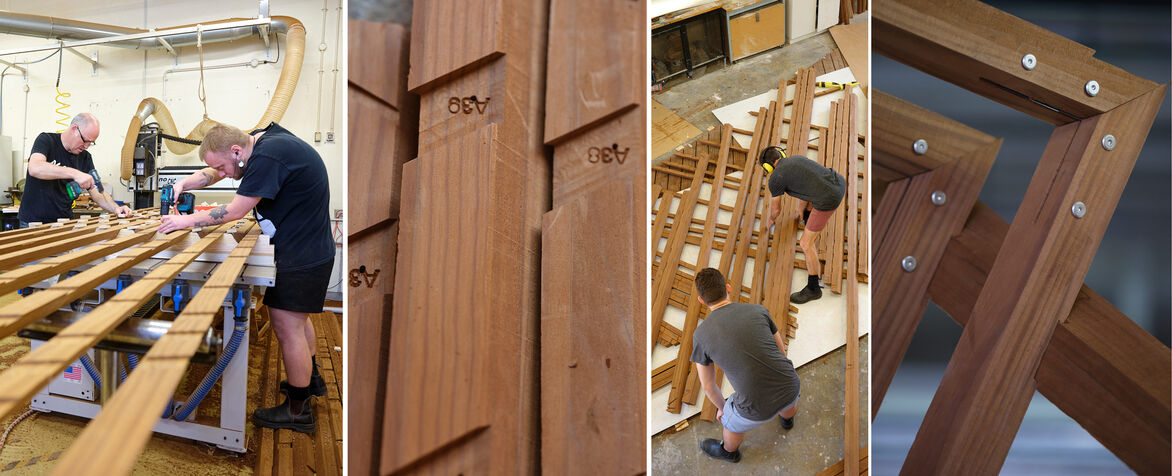
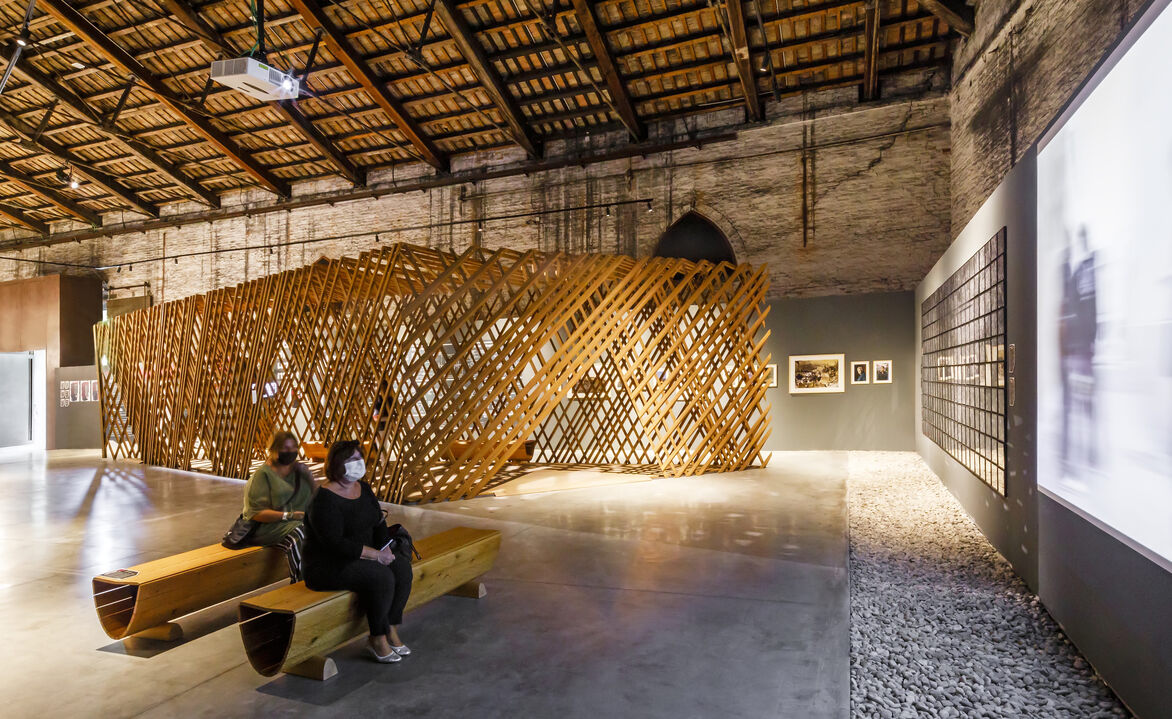
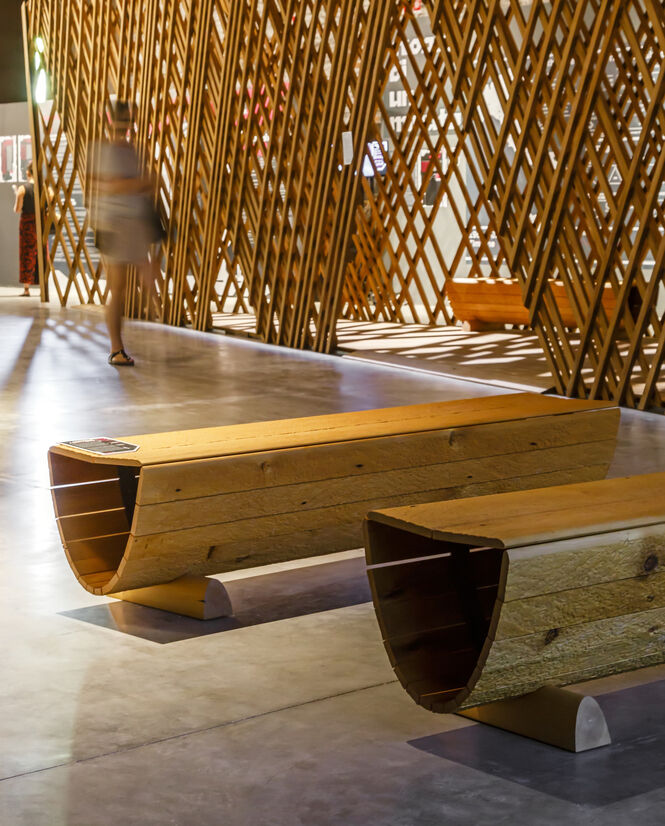
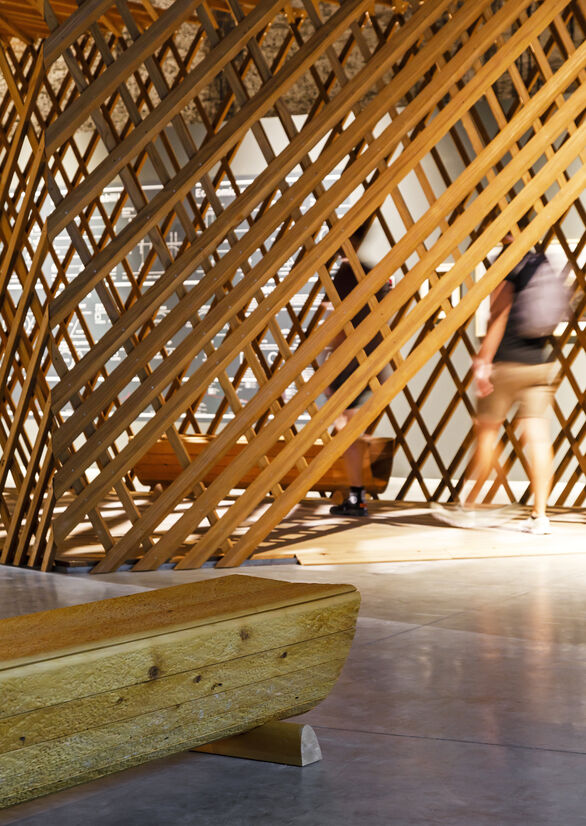
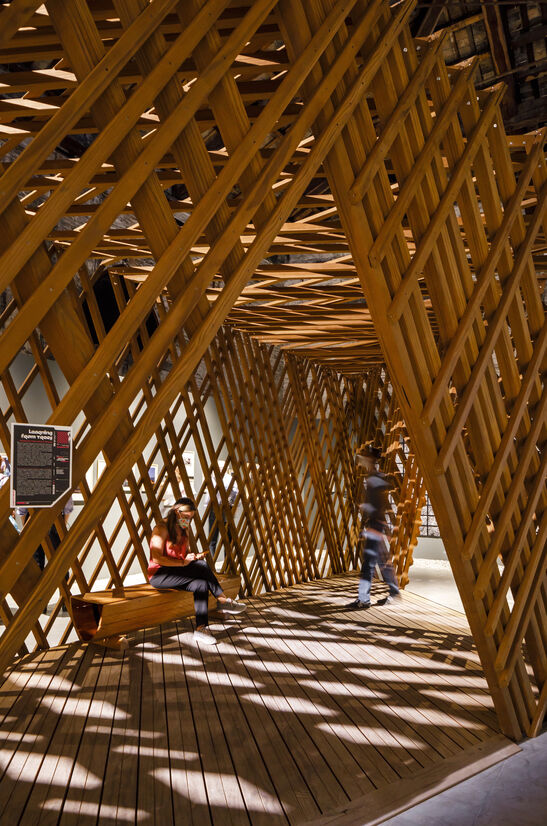
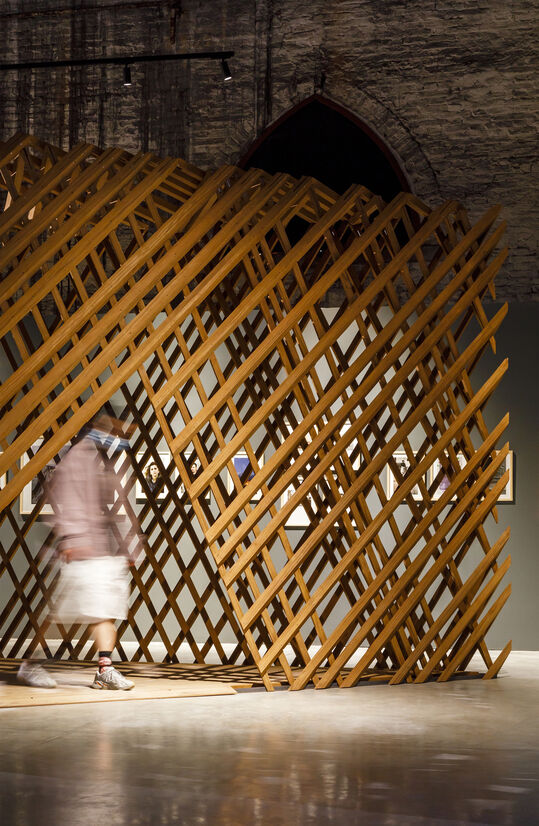
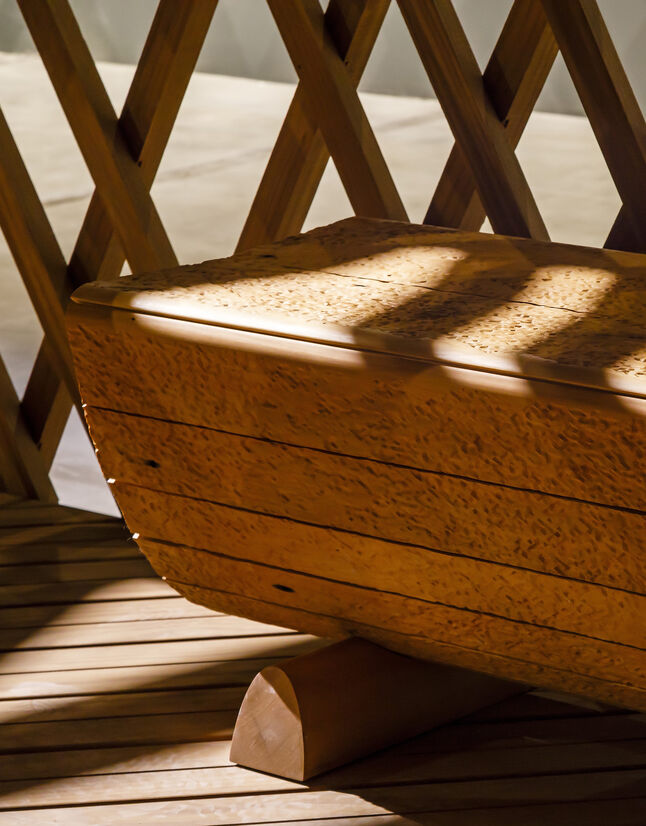
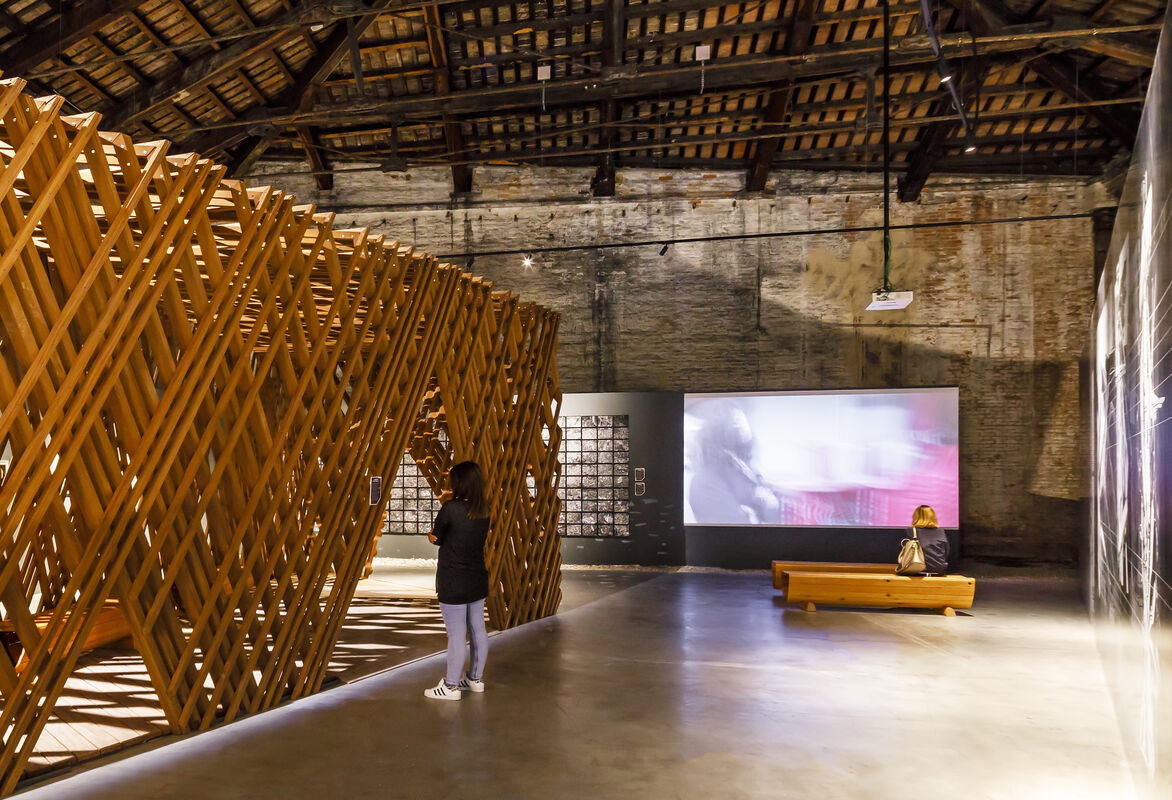
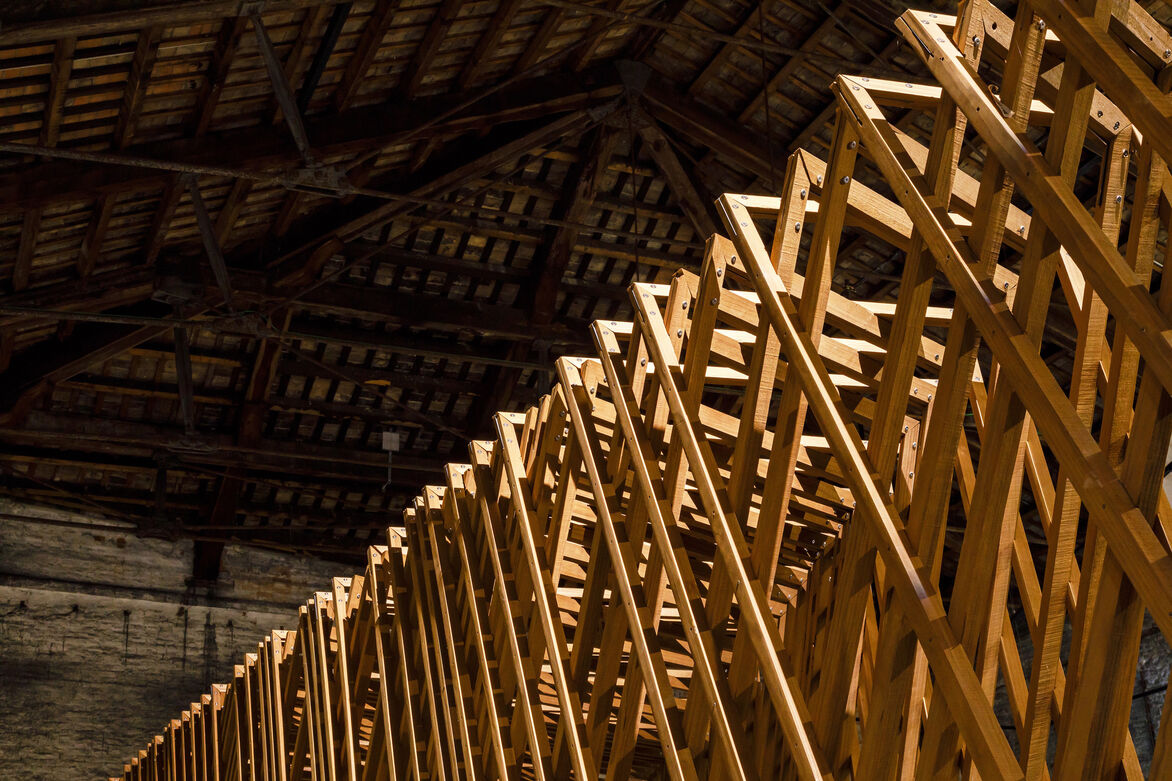
Description:
This project was an invited contribution within the Italian Pavilion at the 17th International Architecture Exhibition of La Biennale di Venezia. The theme of the Italian Pavilion was Resilient Communities, the various exhibits showcasing a wide range of innovative approaches to the climate emergency. We were invited to create a meeting and display space that both showcased the innovative use of timber, and housed seating, tables, and display plinths. Covid occupancy restrictions during the Biennale meant that of these functional elements, only a few benches were installed.
Our goal for the project was a lightweight, sustainable structure pointing the way to a different kind of timber construction.
In recent years, staff and students [at a NZ university] have been developing lightweight timber structures fabricated from relatively small structural elements with relatively complex machined joints. These timber elements occupy something of a gap in the spectrum of CNC fabrication options available in New Zealand: highly specialised CNC machines are used to fabricate heavy primary structural members, while smaller, more widely available milling machines are used to mill sheets into interior elements such as cabinetry. However, thinner, non-repetitive structural and finishing timber elements are typically still made by hand on the construction site. We have devised a ‘hack’ methodology for efficiently modeling and milling such elements en masse using standard CNC machines. This involves digital processes for modeling elements and preparing cutting files, as well as the development of a jig system that allows over-length elements to rapidly be secured in the milling machine, milled, and removed for assembly.
The design of the project had to meet a number of constraints. The project needed to be able to be compressed into a minimal volume for shipping. However, there was only a short window for the assembly, so it needed to be able to be rapidly and accurately assembled in the gallery. Further, the budget for the project was small: $160,000 for the project—design, fabrication, shipping, installation, and eventual relocation for permanent use.
A major challenge when designing timber structures is that the joints often rely on steel fixings to transmit loads and allow ductility. What begins as a largely timber structure can quickly become dominated by steel plates to make the joints function. This type of construction is expensive and complicated, negating the sustainability, economy, and ease of construction that are the great benefits of timber. Further, in complex timber structures, particularly those following non-orthogonal geometries, joints and corners often become geometrically complex and difficult to build. The solution used is not to ‘fold’ the structure around the form, but consider the structure as three-dimensional at the outset. This means the corners become very simple, and can be resolved with simple L-plates. The timber structural elements use diamond-shaped profiles, but by embedding hidden symmetries into the geometry, the number of different profiles and joint types was cut in half.
The result is a complex lattice-like 35m2 structure that looks as if it has been woven, only out of 1.2kms of custom milled timber.